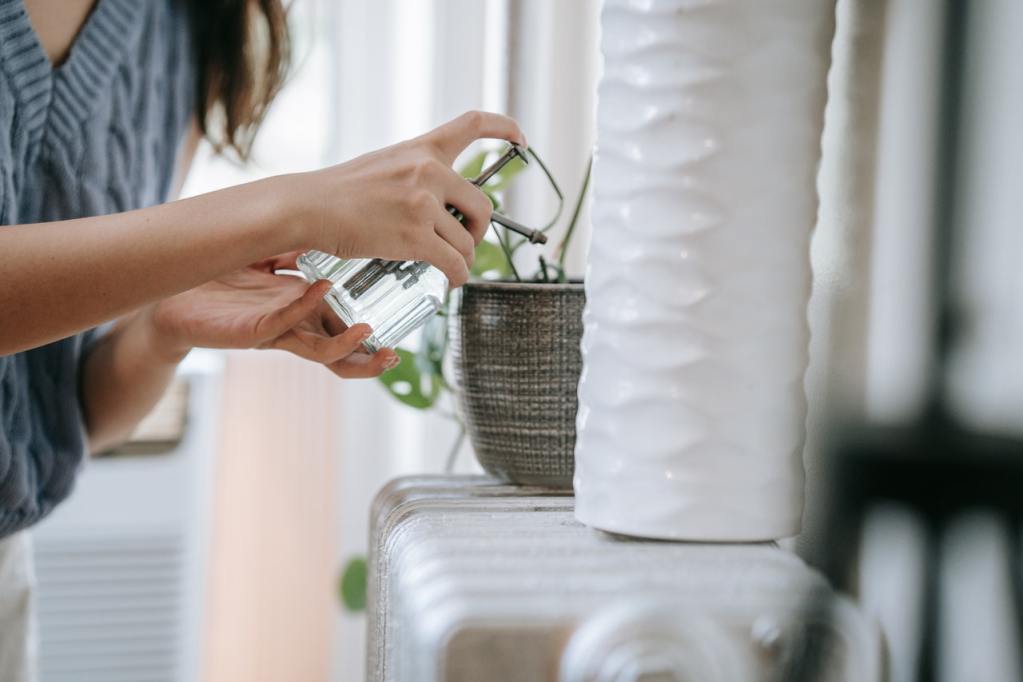When you get a new plant, it may be hard to know how to care for it, but doing your research can calm your nerves. So give yourself the power to understand how to care for the stunning zebra plant, and read this guide to ensure you can give it the proper care and attention it needs to thrive.
What is a zebra plant?
The zebra plant, or Aphelandra squarrosa, is native to Brazil and would make a lovely addition to any indoor plant collection. They are temperamental plants and not recommended for beginners. But the zebra plants large dark green leaves with bright, whitish-yellow veins are hard to resist.
In ideal conditions, they might even produce a bright-colored yellow flower that can last up to six weeks. This flower typically appears in late summer or early fall and is the highlight of owning this plant. When cared for properly, the zebra plant can grow up to 2 feet tall and 5 feet wide when it’s fully mature. However, you might find it hard to get it that large with its sensitivities.
How to care for a zebra plant
As we have said, this is not a beginner plant, but here is everything you need to know to care for the zebra plant to ensure that it can thrive in your home.
Water
The zebra plant prefers its soil to stay a bit moist, so you’ll have to walk the thin line between overwatering and risking root rot to keep this plant happy. To avoid disaster, we suggest getting a moisture meter. That way, you’ll be able to accurately measure the moisture within the soil to know if it’s time to water the plant or not.
Root rot can happen fast, and this plant is susceptible to it. When it’s time to water, thoroughly soak the soil until water comes out of the drainage hole. Be sure to empty the saucer underneath once the plant is done draining to avoid root rot. Don’t pour water onto the leaves, or the water will run down the leaves and stems and sit at the center of the plant and cause root rot.
Light
When it comes to light, the zebra plant wants bright indirect light. It can tolerate a bit of direct morning sun, but prolonged exposure to direct sunlight can burn those stunning leaves. They also can’t handle low light, so they must have a good balance between bright but not direct light.
Food
You’ll want to feed your zebra plant every week or every other week during the spring and summer. Apply a general houseplant fertilizer diluted by half with water to the soil and be sure the soil is already damp when you’re feeding it.
Temperature
Anything above 65 degrees Fahrenheit suits the zebra plant, so the average temperature of your home will likely be perfect. Just be sure to avoid drafty windows and doors, as these tend to have sudden temperature changes that would shock the plant and damage it. Maybe put it next to your stunning spider plant to help keep it safe from drafts.
Humidity
Zebra plants don’t mess around when it comes to the humidity of the air around them. They need it to be approximately 60 to 70 percent humid in their environment. If it’s not, the leaf edges will brown, and new leaves won’t develop properly. You can group humidify-loving plants together in a corner to create a mini-ecosystem where the plants share humidity. Alternatively, you can buy a humidifier for the room and leave it on to ensure it’s humid enough. You’ll also want to avoid placing this plant near a vent or drafty door at all costs, or else this poor plant won’t survive.
Toxicity
Luckily, this beautiful plant is nontoxic to both humans and pets. You can place your zebra plant anywhere and not worry about a curious kitty taking a bite out of it. Of course, these plants can be a bit on the pricy side, so maybe still keep it away from pets that you know might want to mess with it. You don’t want to do all that hard work keeping it alive and helping it thrive just to have a pet knock it off its shelf or stand.
However, although it is nontoxic, the sap from within the plant has been known to cause some irritation to the skin, so it might be a good idea to wear long sleeves and gloves when pruning and caring for the zebra plant.
Additional Care
If you’re lucky enough to have this plant produce one of its spikey yellow flowers, you’ll need to know how to prune it once it’s done showing off. After about six weeks, the flower of this plant will start dying off — it will turn brown — and when this happens, it’s time to cut it off.
Editors' Recommendations
- Stunning Monstera plants that you should add to your indoor plant collection
- Beyond basil and cilantro, add these unique plants to your indoor herb garden
- 5 easy-care spider plant varieties perfect for any home garden
- Easy hoya plants to add to your indoor plant collection
- Are these common houseplants safe for your cat? Read this guide to find out the scoop






